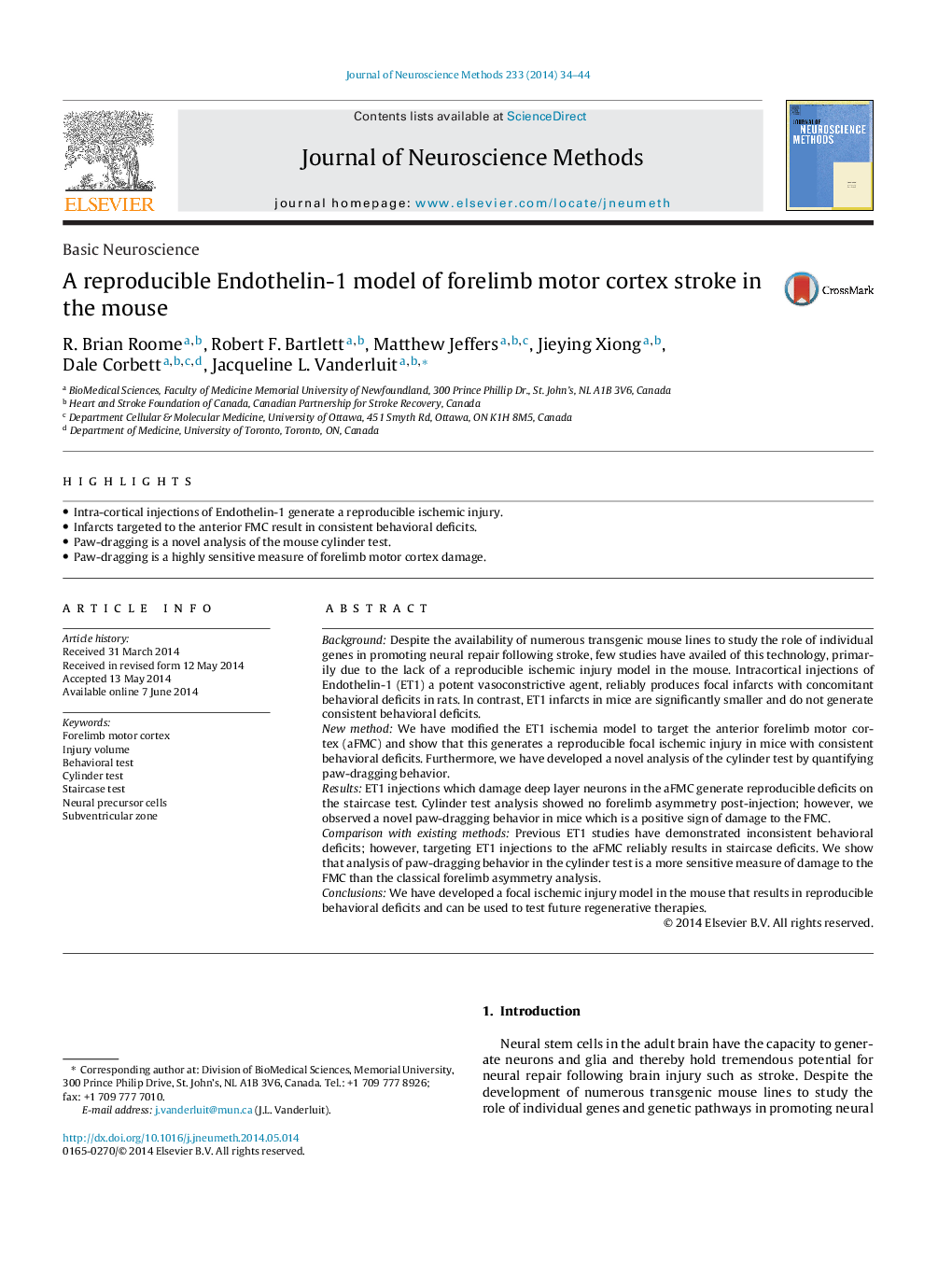| کد مقاله | کد نشریه | سال انتشار | مقاله انگلیسی | نسخه تمام متن |
|---|---|---|---|---|
| 6268473 | 1614636 | 2014 | 11 صفحه PDF | دانلود رایگان |
- Intra-cortical injections of Endothelin-1 generate a reproducible ischemic injury.
- Infarcts targeted to the anterior FMC result in consistent behavioral deficits.
- Paw-dragging is a novel analysis of the mouse cylinder test.
- Paw-dragging is a highly sensitive measure of forelimb motor cortex damage.
BackgroundDespite the availability of numerous transgenic mouse lines to study the role of individual genes in promoting neural repair following stroke, few studies have availed of this technology, primarily due to the lack of a reproducible ischemic injury model in the mouse. Intracortical injections of Endothelin-1 (ET1) a potent vasoconstrictive agent, reliably produces focal infarcts with concomitant behavioral deficits in rats. In contrast, ET1 infarcts in mice are significantly smaller and do not generate consistent behavioral deficits.New methodWe have modified the ET1 ischemia model to target the anterior forelimb motor cortex (aFMC) and show that this generates a reproducible focal ischemic injury in mice with consistent behavioral deficits. Furthermore, we have developed a novel analysis of the cylinder test by quantifying paw-dragging behavior.ResultsET1 injections which damage deep layer neurons in the aFMC generate reproducible deficits on the staircase test. Cylinder test analysis showed no forelimb asymmetry post-injection; however, we observed a novel paw-dragging behavior in mice which is a positive sign of damage to the FMC.Comparison with existing methodsPrevious ET1 studies have demonstrated inconsistent behavioral deficits; however, targeting ET1 injections to the aFMC reliably results in staircase deficits. We show that analysis of paw-dragging behavior in the cylinder test is a more sensitive measure of damage to the FMC than the classical forelimb asymmetry analysis.ConclusionsWe have developed a focal ischemic injury model in the mouse that results in reproducible behavioral deficits and can be used to test future regenerative therapies.
Journal: Journal of Neuroscience Methods - Volume 233, 15 August 2014, Pages 34-44
